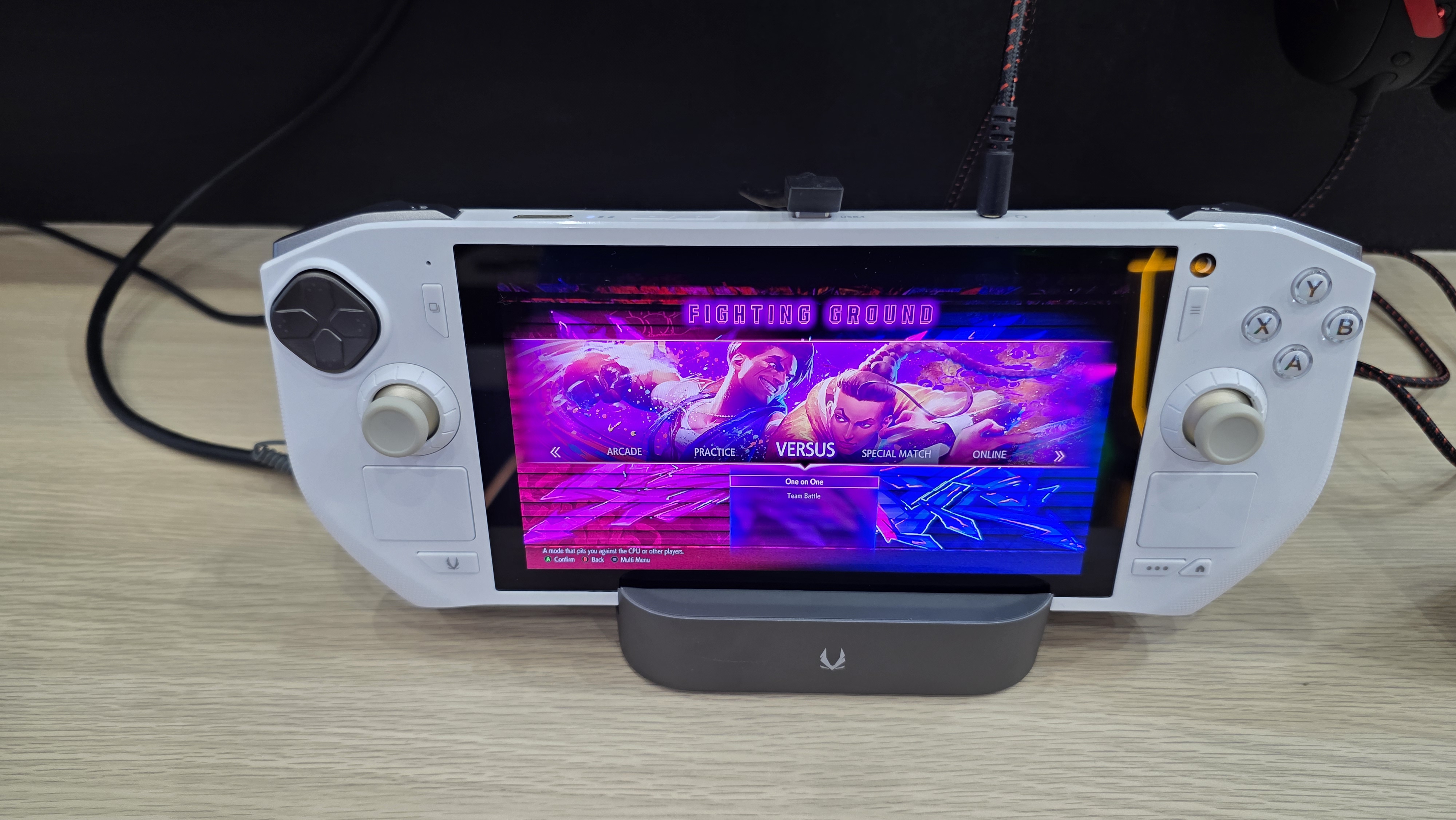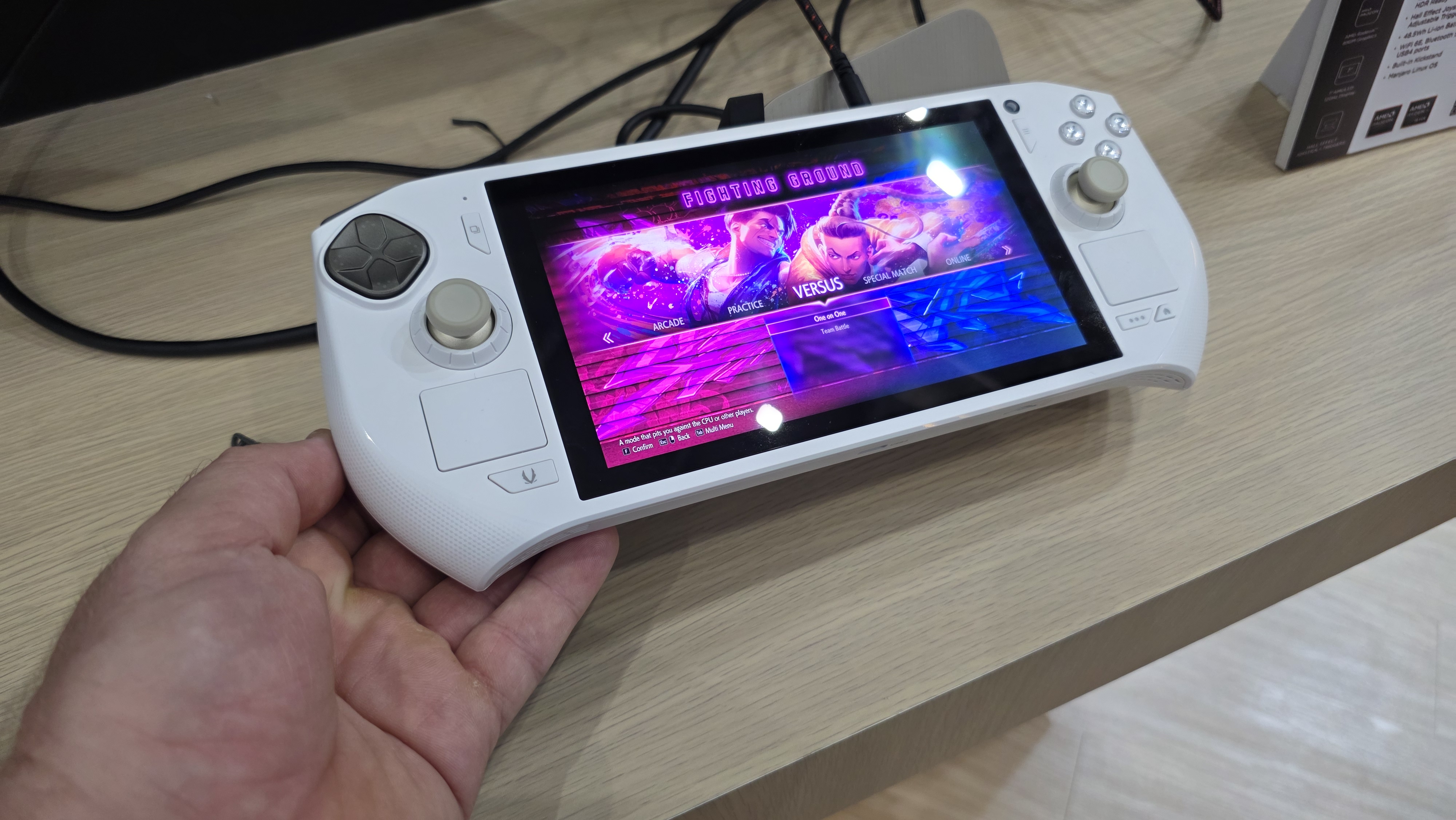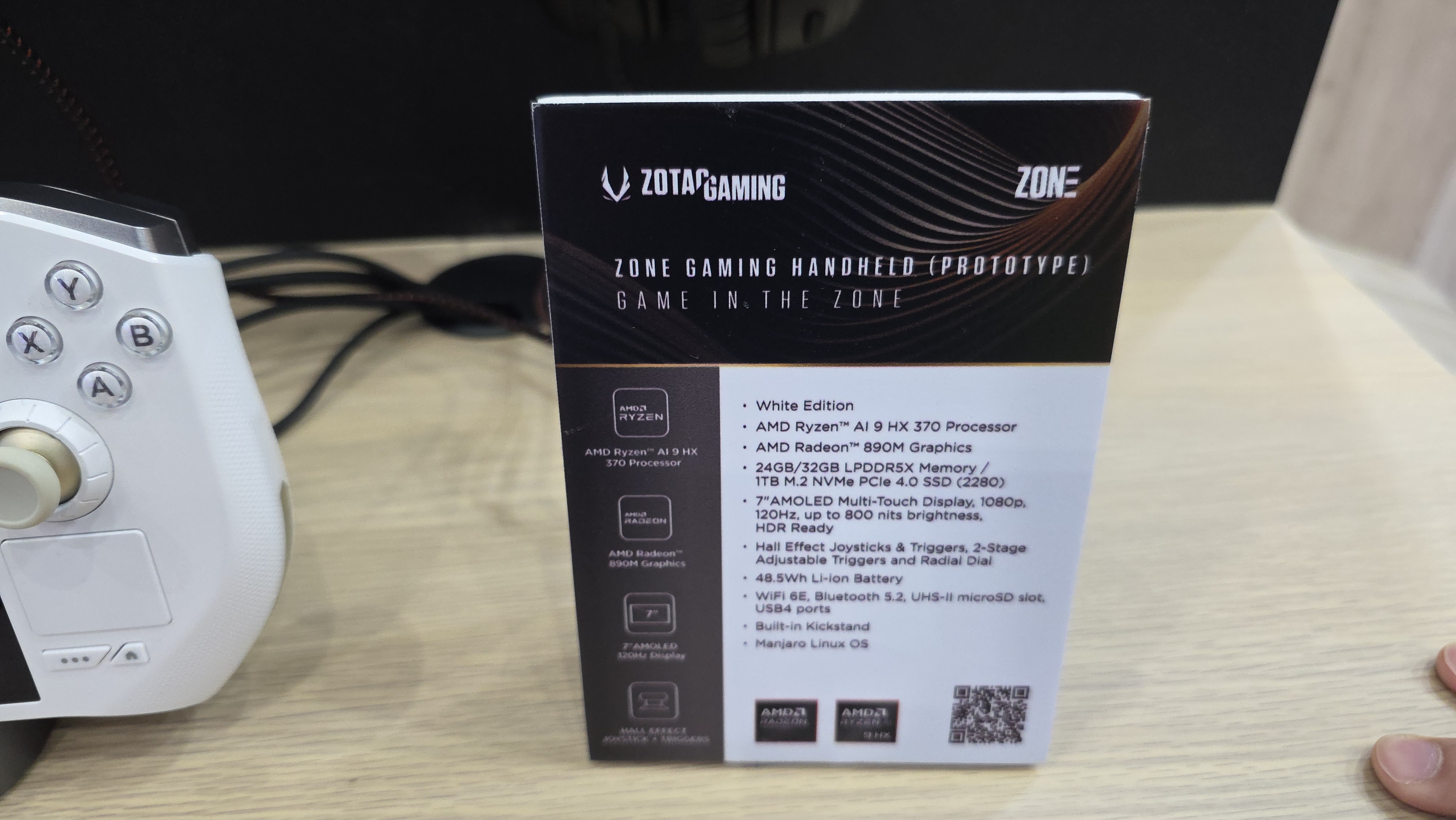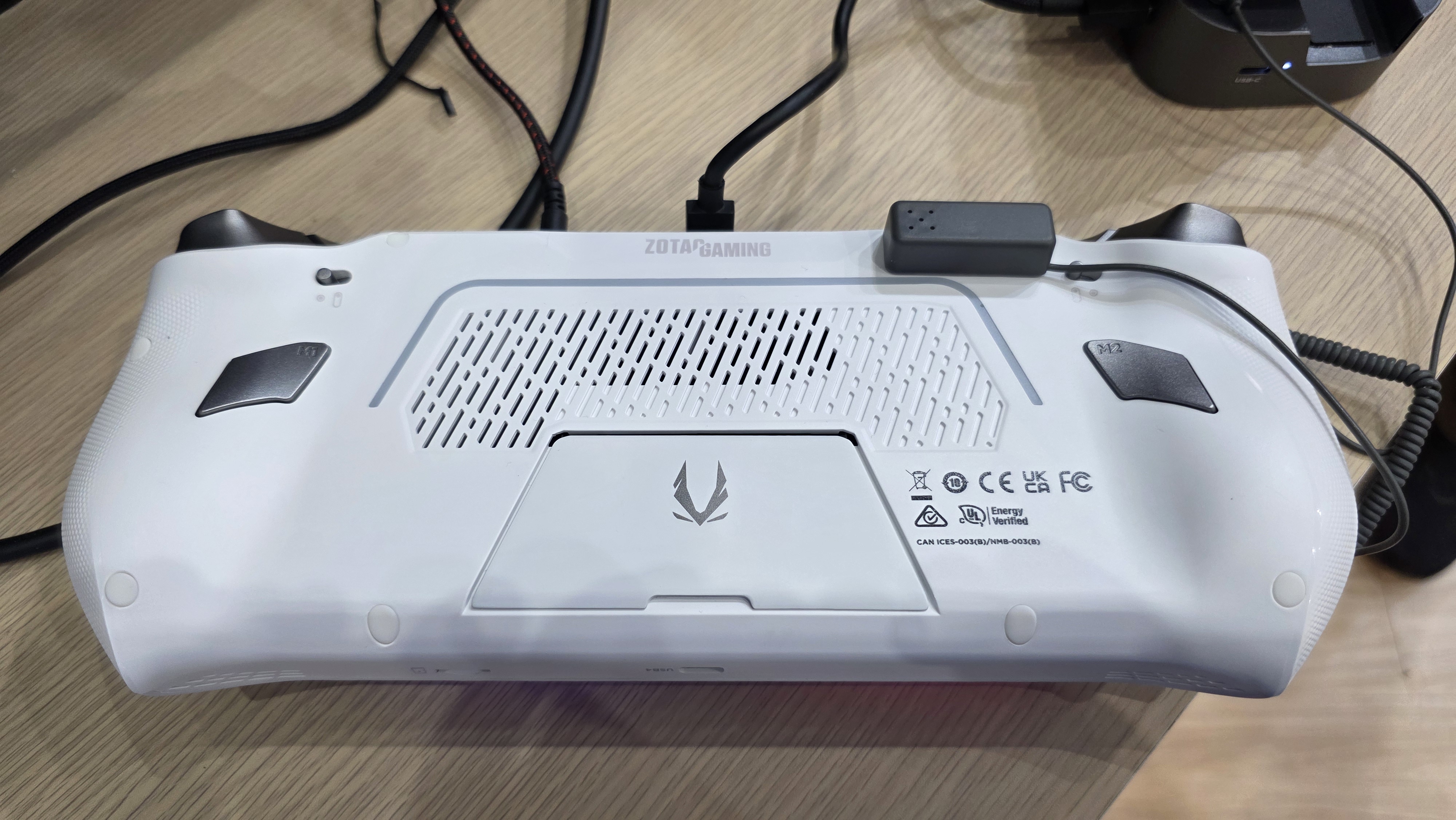Zotac Zone 2 demoed with Manjaro Linux and an AMOLED panel — 12-core Zen 5 CPU and 32GB RAM under the hood

Zotac's Computex 2025 booth has a beautiful handheld for showcase, pairing a 7-inch AMOLED panel with AMD's powerful Ryzen AI HX 370 APU from the Strix Point family. Breaking from Windows and SteamOS, Zotac has opted for Manjaro Linux as the Operating System. The handheld is currently called Zone 2, but its final name, pricing, and availability are still unconfirmed.
Zotac's original Zone 1 handheld debuted in September last year. It is powered by AMD's last-generation Ryzen 7 8840U, introduced in December 2023. Zotac has clearly been on a slower release schedule compared to the competition. Initially revealed at CES in January, Zotac has once again showcased the expected follow-up to the Zone 1 at Computex. Their representative confirmed that the "Zone 2" designation isn't final, but that's what it will likely be called, with an expected launch window sometime later this year.
The AMD Ryzen AI 9 HX 370 APU powering this handheld features a 12-core (4x Zen 5 + 8x Zen 5c) layout, the Radeon 890M (12 CUs) iGPU, along with a 50 TOPS capable NPU. While other alternatives are sticking to the handheld-focused and conservative Ryzen Z2 Extreme, Zotac is choosing the faster and potentially more expensive option. 24/32GB LPDDR5x memory options complement this with a 1TB PCIe 4.0 (M.2 2280) SSD that is user-upgradeable.



One of the most important highlights is the 7-inch 1080p AMOLED touch display, offering a 120 Hz refresh rate, 800-nits peak brightness, and support for HDR. Similar to the Nintendo Switch, Zotac has equipped this handheld with a built-in kickstand to meet your tabletop gaming requirements. It sports two touchpads, hall-effect joysticks and triggers (dual-stage adjustable), along with a radial dial beneath the joysticks.
The handheld is powered by an immutable version of Manjaro Linux, featuring the KDE Plasma 6 desktop environment, similar to Valve's SteamOS. The device will likely use Proton for game compatibility, which means it will face the same anti-cheat limitations in multiplayer games as other Steam-based systems. Though other titles should work without any hiccups, similar to the Steam Deck. You do have the option to switch to Windows, or any other Operating System for that matter.
Backed by a 48.5Wh Li-ion battery, the system offers a similar playtime to the original Zone 1. For I/O, you get a UHS-II microSD slot, a 3.5mm jack, and several USB4 (40 Gbps) ports. Wireless connectivity is provided by WiFi 6E and Bluetooth 5.2 options. At the back, we can spot two additional buttons, toggles for the dual-stage triggers, and a mesh-style design for heat dissipation. You can expect more details leading up to Zotac's global launch, whenever it happens.
Follow Tom's Hardware on Google News to get our up-to-date news, analysis, and reviews in your feeds. Make sure to click the Follow button.
Get Tom's Hardware's best news and in-depth reviews, straight to your inbox.

Hassam Nasir is a die-hard hardware enthusiast with years of experience as a tech editor and writer, focusing on detailed CPU comparisons and general hardware news. When he’s not working, you’ll find him bending tubes for his ever-evolving custom water-loop gaming rig or benchmarking the latest CPUs and GPUs just for fun.
- Paul AlcornEditor-in-Chief
-
-Fran- Track Pads! YES!Reply
Sorry Zotac, but I'll still use my Steam Deck. It does look great to me though. Specs and visual fetures look nice. Battery though... I hope they try and pack the biggest battery they can get away with.
Regards. -
hushnecampus Reply
Agreed - having trackpads at least moves it out of the instant-no category.-Fran- said:Track Pads! YES!
Sorry Zotac, but I'll still use my Steam Deck. It does look great to me though. Specs and visual fetures look nice. Battery though... I hope they try and pack the biggest battery they can get away with.
Regards.
Wonder why they want with Manjaro rather than Steam OS? I mean OK, you can still have Steam launch the Deck UI when you turn it on, but that does add an extra layer of fiddlyness, having to have a binding for alt-tab, risk of pop-ups/alert/notifications interfering, etc. -
ezst036 Guess it looks like it will be people playing games who will lead us out of Windows.Reply
Which makes sense. All of the bloat in Windows does not really negatively affect someone using Adobe Acrobat or Office 365. But all of the bloat reduces frame rates and Windows also does not fit very well on those smaller screen form factors.
PewDiePie moving to Linux and being so public about it probably is helping too.
I see a lot of articles these days that Linux is indeed fully game ready but there's only one final frontier and that's anti-cheat. Once anti-cheat is overcome that's it, Linux will indeed be equal with Windows. Windows will have the legacy edge but Linux will have the performance edge. -
hushnecampus Reply
It's not the bloat that bugs me most about Windows, frankly I doubt it's having a significant effect on my FPS or simulation speed. For me it's the UX, specifically the way it keeps trying to sell me things and nagging me to change my mind when I've already said no. Windows essentially makes me go back through the setup wizard again every time there's a major update, and tries to get me to buy subscriptions to things.ezst036 said:Guess it looks like it will be people playing games who will lead us out of Windows.
Which makes sense. All of the bloat in Windows does not really negatively affect someone using Adobe Acrobat or Office 365. But all of the bloat reduces frame rates and Windows also does not fit very well on those smaller screen form factors.
PewDiePie moving to Linux and being so public about it probably is helping too.
I see a lot of articles these days that Linux is indeed fully game ready but there's only one final frontier and that's anti-cheat. Once anti-cheat is overcome that's it, Linux will indeed be equal with Windows. Windows will have the legacy edge but Linux will have the performance edge.
Regarding anti-cheat though, let's not pretend that's a small hurdle. Making kernel level anti-cheat work on a system where people can use many different versions of the kernel, including bespoke ones, sounds like a big blocker to me (I don't know much about how Linux kernels work though so I could well be wrong). -
-Fran- Reply
Probably an early version of it, or perhaps they're waiting on Valve to be added as a supported vendor and going through the paces, so on the meantime, they're getting used to Linux?hushnecampus said:Agreed - having trackpads at least moves it out of the instant-no category.
Wonder why they want with Manjaro rather than Steam OS? I mean OK, you can still have Steam launch the Deck UI when you turn it on, but that does add an extra layer of fiddlyness, having to have a binding for alt-tab, risk of pop-ups/alert/notifications interfering, etc.
Regards. -
MobileJAD I want this so bad, but for now I'm stuck with my cheaper and older Win600. And I'm perfectly fine with running a full blown Linux distro rather than SteamOS as I currently run OpenSuSE Tumbleweed Linux on my Win600 as launching Steam as a app and running my games with Proton works perfectly fine, no issues with controllers or buttons or anything. But while I'm just using my Win600 as a fun way to work through my game backlog, I wouldn't mind some more horsepower too.Reply